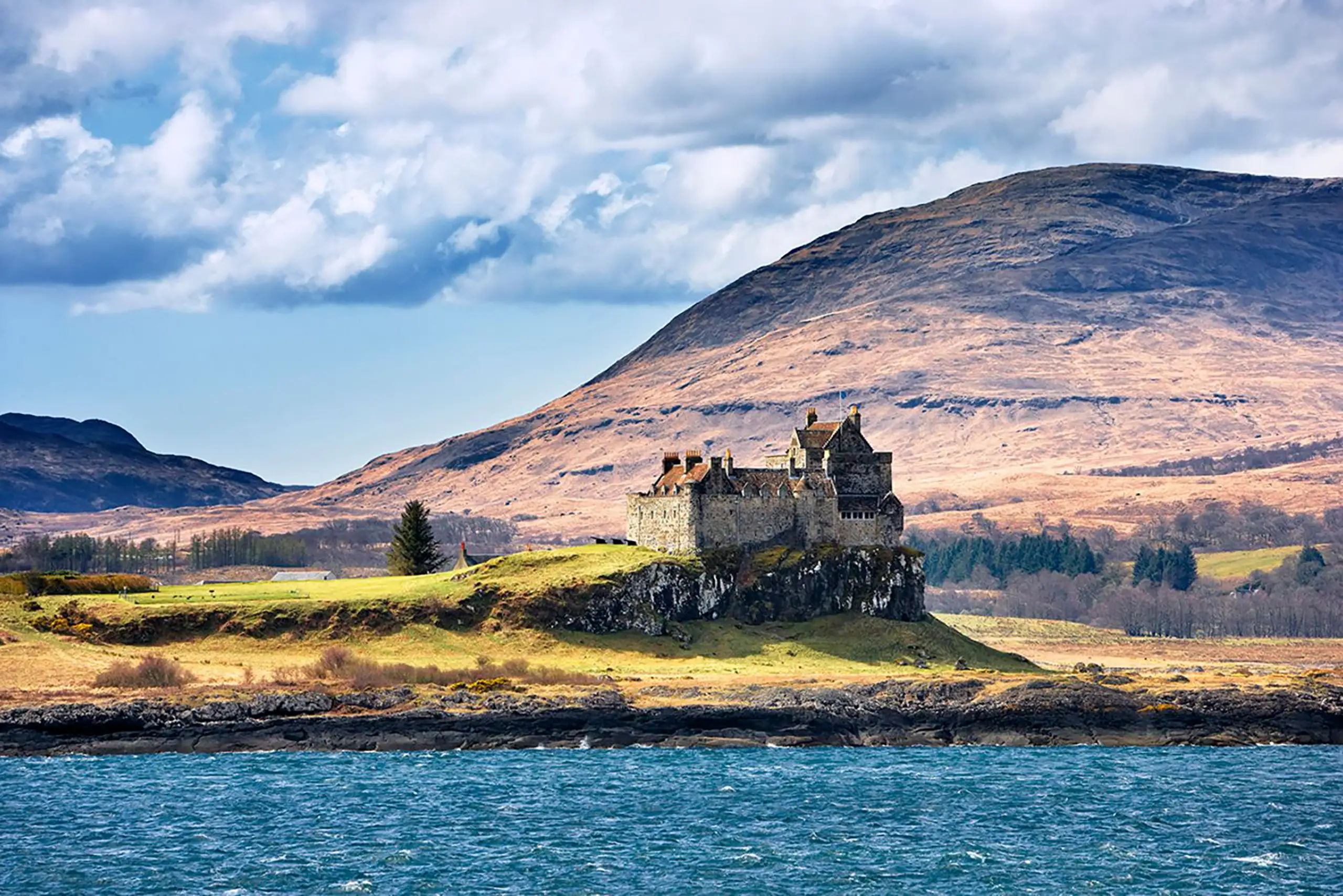The Iceland to Scotland route runs in both directions, so check the ‘Dates’ & ‘Prices’ tab for exact details of each route. This is an example of the route from Seydisfjordur, Iceland, to Scotland and is a general description of what we can expect and some of the places we hope to visit. Exact timings and routings will be discussed with the crew when we know the weather forecast.
Cruising & training on the Icelandic coast.
Seyðisfjörður, a frontier-style town in Iceland, has many well-preserved wooden buildings, a surprisingly vibrant arts scene, and a stunning fjord setting. Surrounded by mountains and waterfalls, it is a beautiful place to start the adventure. Before heading out into the Atlantic from here, we’ll train for the first couple of days to enable us all to get up to speed as individuals and a crew. We’ll get everyone helming, trimming sails, tacking, gybing, and doing rescue drills. The Icelandic coast is wild and rugged, with stunning scenery.
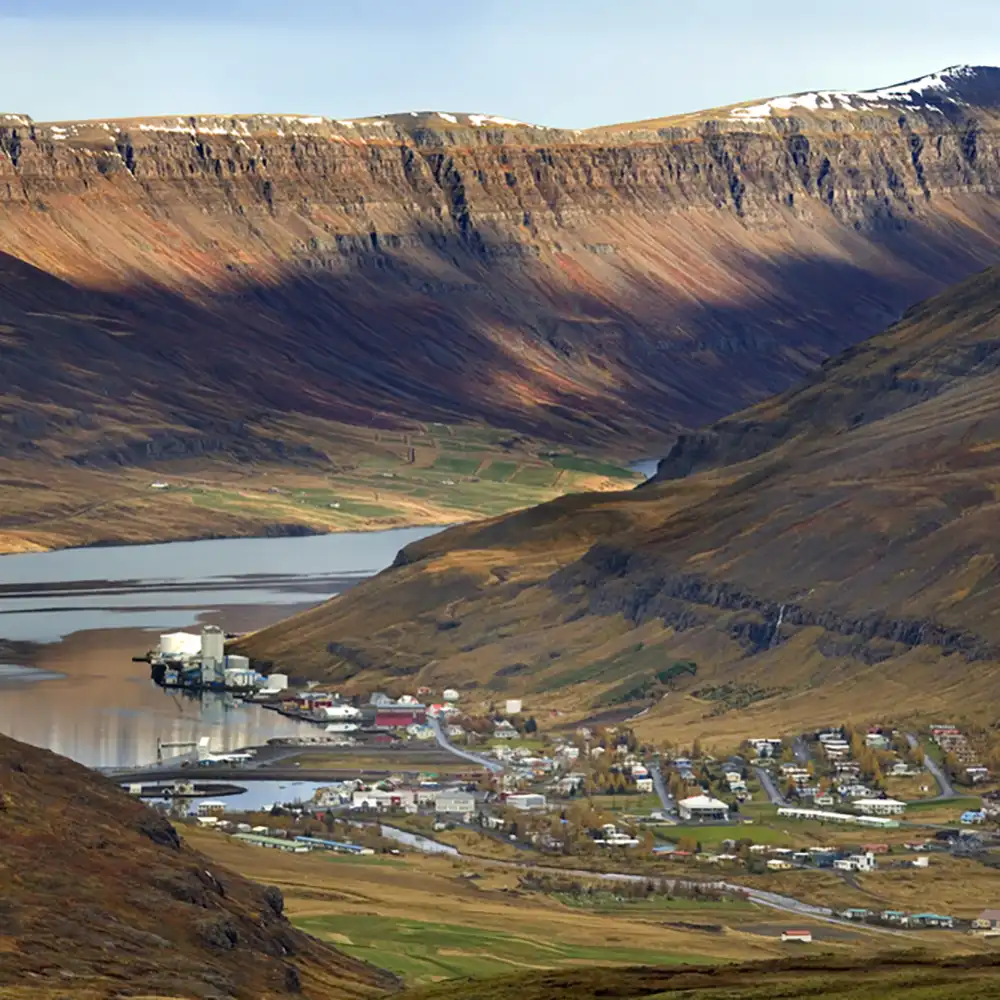
We’ll likely sail into Nordfjord for the first night. Nestled south of Seyðisfjörður, Nordfjord is a hidden gem with fantastic views and rugged mountains. It’s a haven for nature lovers and is famous for its soothing hot springs and natural thermal baths.
Passage to the Faroes
It’s time now for the longest passage of the trip. It is 400 miles from here across the North Atlantic to the Faroes, which are around 180 miles northwest of the Shetland Islands. We can expect to be at sea for 2.5 to 3 days. Offshore sailing offers a unique sense of freedom and adventure. Once the snow-capped fjords have disappeared from view and we’re out on the open sea, it’s just us and nature, and the wind and waves guide us. It’s a practical challenge, requiring skills we’ll teach you and real attentiveness to ensure we navigate and sail the boat well.
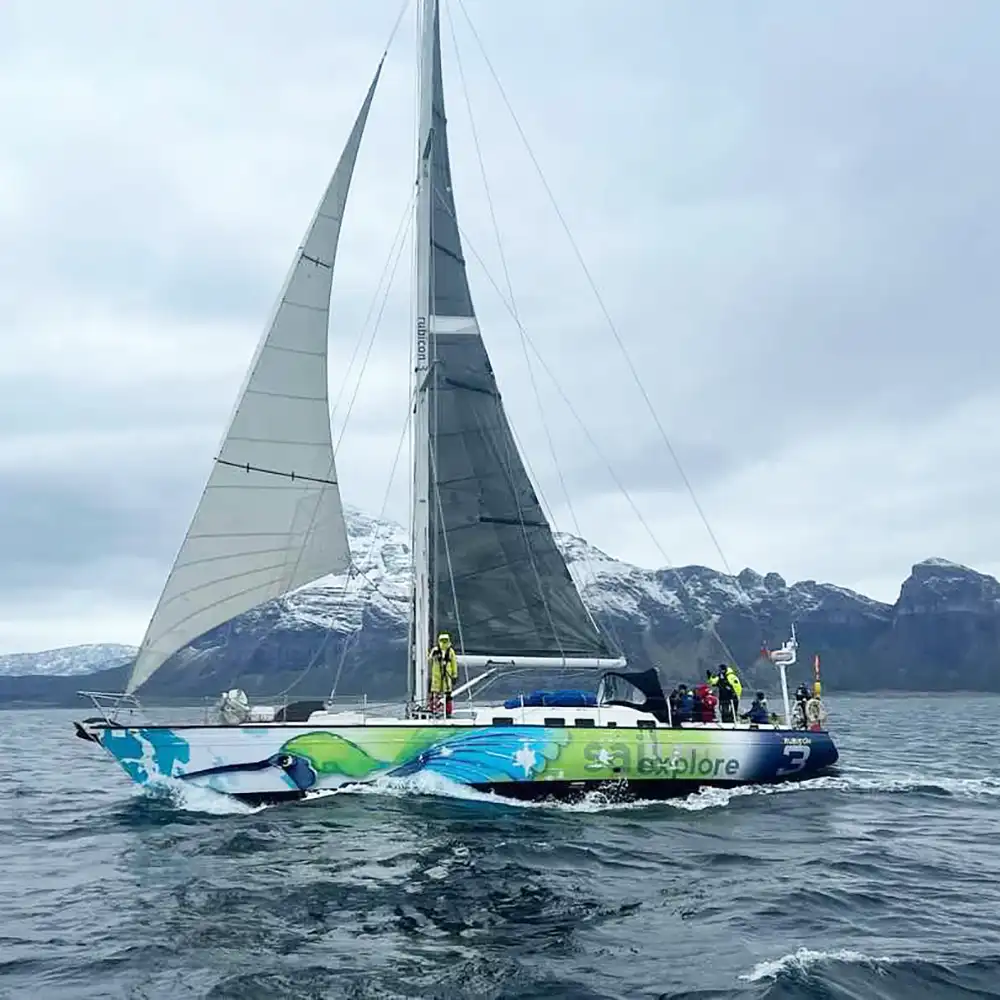
You’ll likely be in a watch system that gives 3 hours on watch and 6 hours of rest sleep time. You’ll be helming, trimming sails, navigating, and keeping a lookout when you’re on watch. When you’re off watch, there’s the vastness of the ocean to enjoy, books to read, and hot, tasty meals to be made and eaten!
We’ll sail through the nights under star-filled skies and through the days with their endless horizons. There’s a chance to see various species of whales, including minke, humpback, and possibly even orcas. Dolphins, such as the common and bottlenose, and porpoises are also common sightings. The North Atlantic is also rich in seabird life. Expect to see puffins, especially around Iceland and the Faroe Islands, as well as gannets, guillemots, razorbills, and various types of petrels and shearwaters. Close to shore, both grey seals and common seals are found in these waters, often spotted lounging on rocky outcrops.
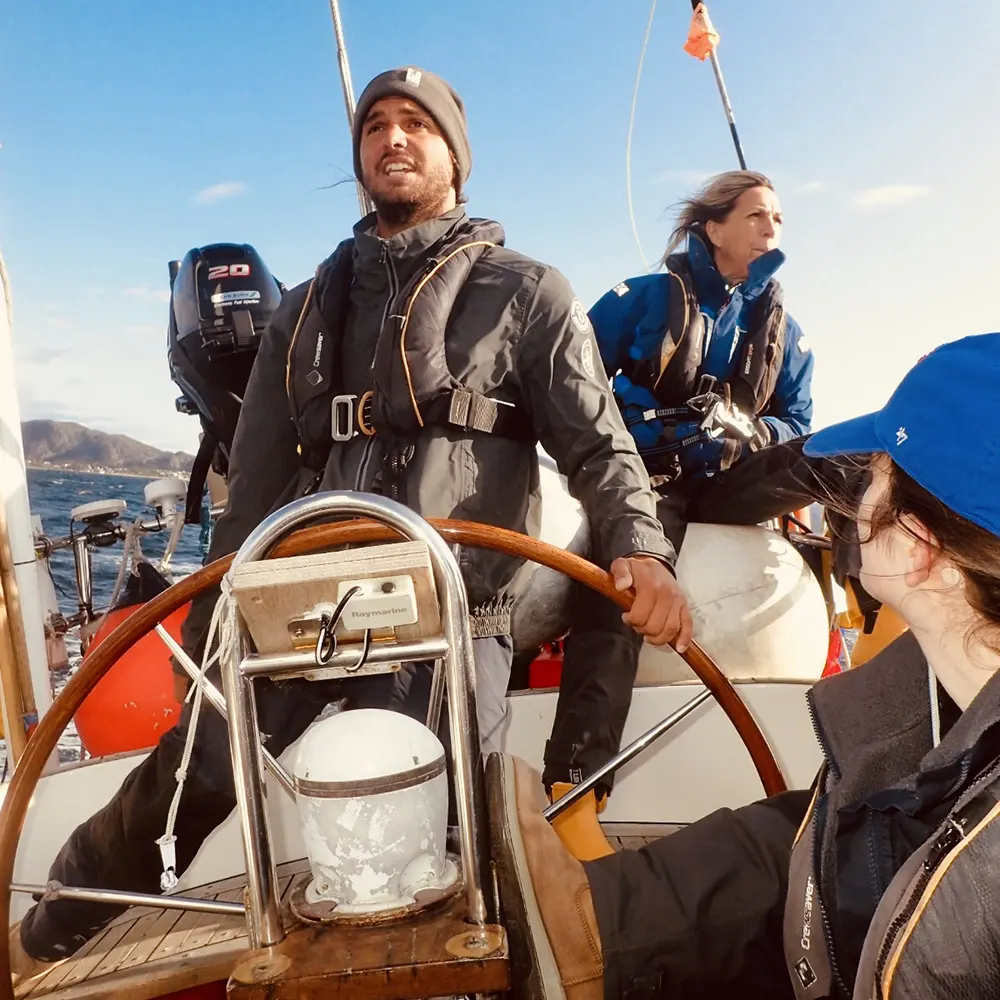
Soon, we’ll make landfall on the remote archipelago of the Faroes and have to navigate our way through the complex and ferocious tides, possibly in one of the almost instantaneous thick blankets of fog that can envelop the islands! We’ll likely come into the capital, Torshavn, situated on the southeast coast of Streymoy, the largest of the 18 islands, and named after the hammer-wielding Norse god of thunder, Thor, meaning Thor’s Harbour.
Exploring the Faroe Islands
We will usually get 2-3 days for some coastal cruising in the Faroe Islands, but this is wholly weather-dependent and can be more or less. They are a magical, unique place to discover, and here are some of the highlights (we will not get to see them all. If you would like more time to explore the Faroe Islands, do look at our Troll, Giants & Elves: Scotland & the Faroe Islands adventure)
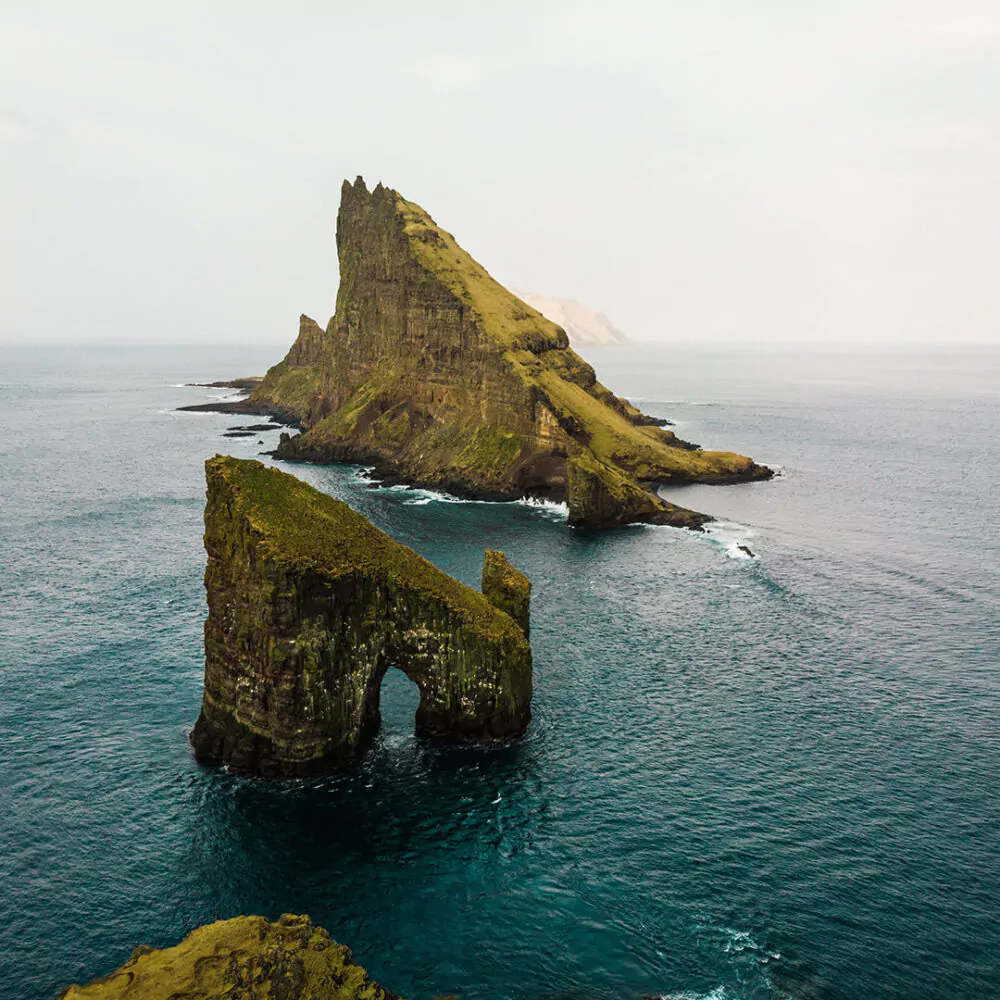
- Múlafossur Waterfall in Gásadalur: A breathtaking waterfall that cascades into the ocean, set against a picturesque village backdrop.
- Sørvágsvatn/Leitisvatn Lake: Known as the lake over the ocean, this is the largest lake in the Faroe Islands, offering stunning optical illusions and views on the south coast.
- Drangarnir and Tindhólmur: These iconic sea stacks and the islet offer some of the most dramatic seascapes in the Faroes.
- Cliffs of Vestmanna: These towering bird cliffs are one of the most spectacular bird cliffs in the northern hemisphere.
- The Village of Gjógv: Known for its natural harbor and charming scenery, this small village is quintessentially Faroese.
- Tórshavn: The capital city is a must-visit for its historic old town, modern Nordic cuisine, and busy cultural scene.
- Kirkjubøur Village: Home to the 13th-century Saint Magnus Cathedral ruins and the oldest still-inhabited wooden house in Europe.
- Mykines: This island is famous for its puffin colonies and the beautiful hike to the Mykines Lighthouse.
- Føroyar Cliffs: Some of the world’s highest sea cliffs offer spectacular hiking opportunities and views.
- Nordic House in the Faroe Islands: Located in Tórshavn, this is the cultural hub for Nordic arts and culture, showcasing the region’s contemporary art, music, and literature.
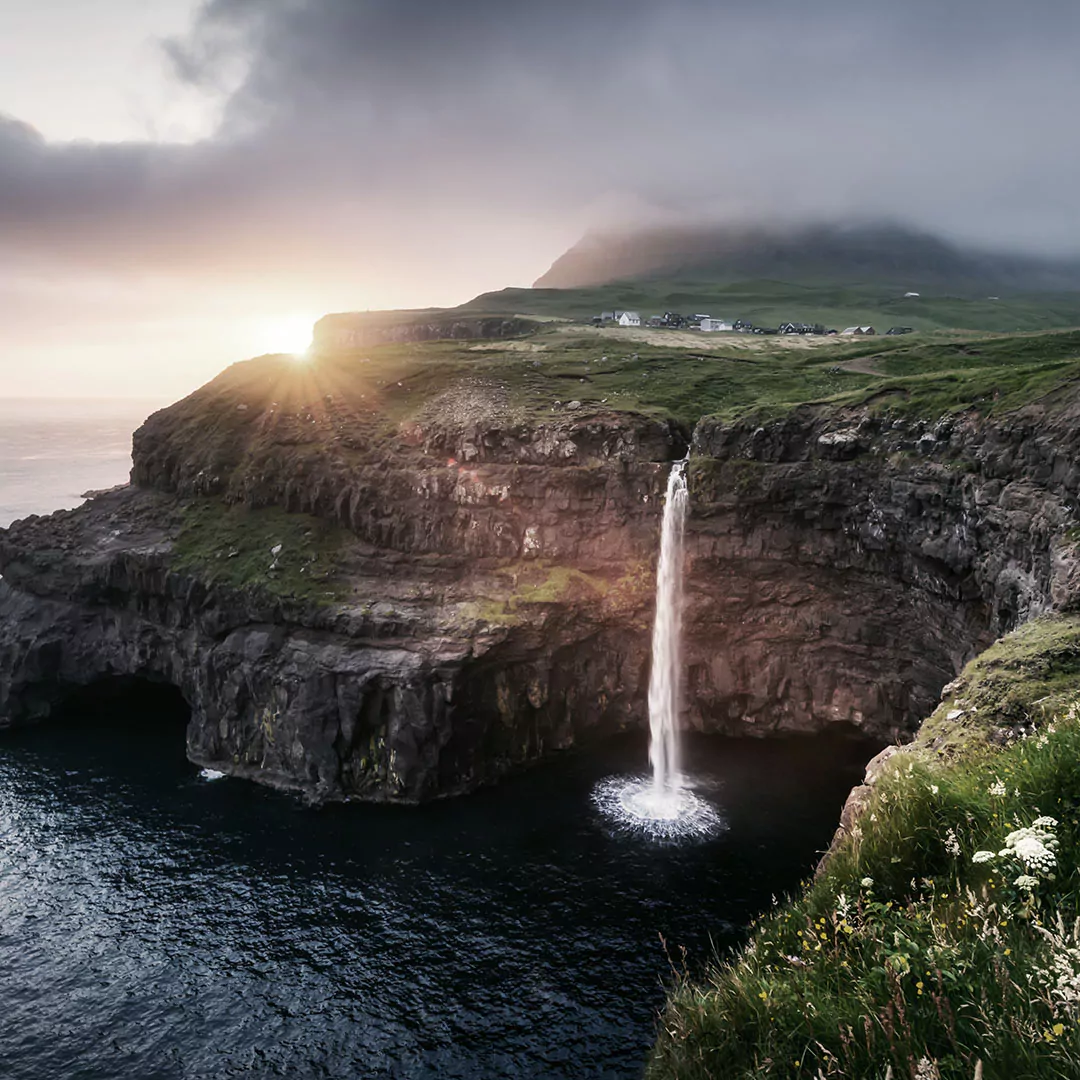
Offshore passage to Scotland & the Isle of Skye
Once we leave the wild volcanic islands of the Faroes, our final offshore passage in the North Atlantic Ocean is around 260nm south. Around 36-48 hours after setting off, we make landfall on Sctoland’s beautiful west coast, likely anchoring off the Isle of Skye. Weather permitting, we’ll anchor in Loch Scavaig, widely recognized as one of the most magnificent natural anchorages in Scotland, if not in all of Europe. Nestled in the heart of the Cuillin Hills, this Loch offers a breathtakingly dramatic landscape. The anchorage is in a relatively small, deep inlet surrounded by high cliffs and steep mountains, providing a stunning backdrop and good shelter from various wind directions.
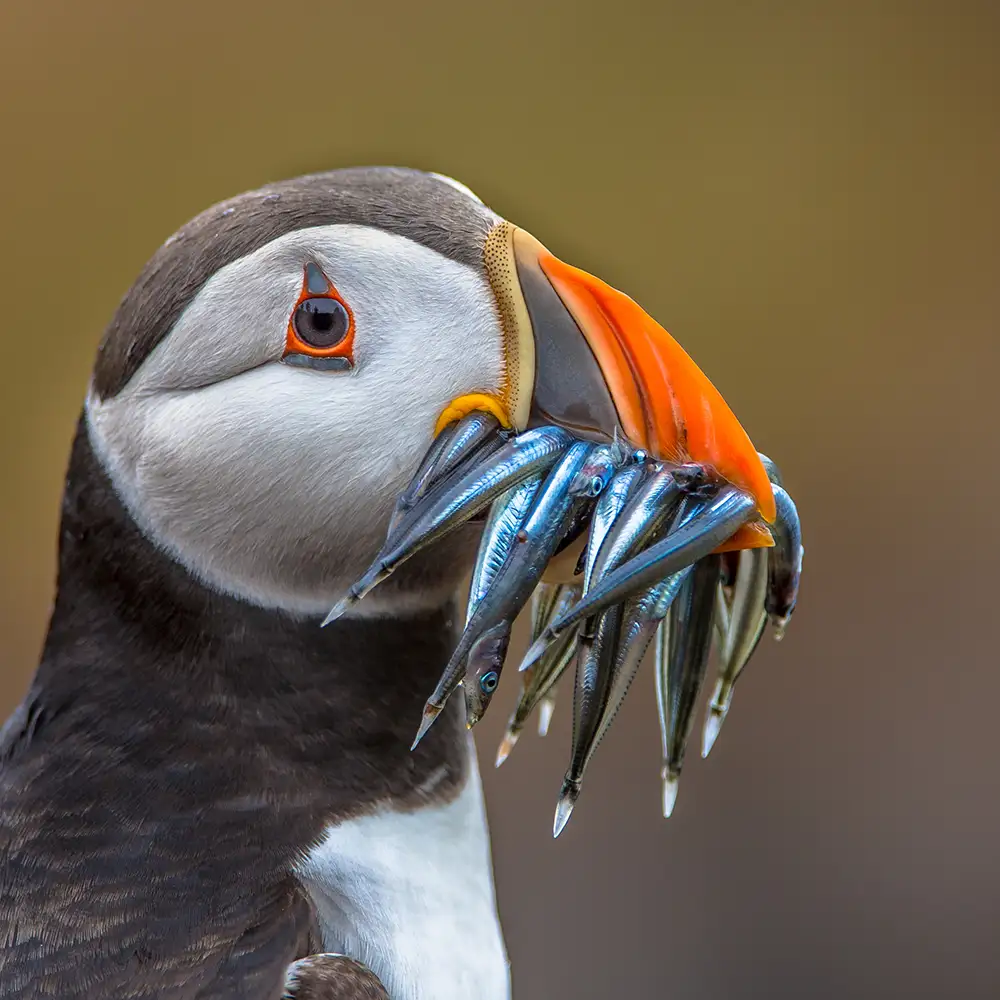
Loch Scavaig is also notable for its wildlife and proximity to the freshwater Loch Coruisk, accessible by a short dinghy ride and a brief walk. The rugged Cuillin Ridge encircles the Loch, creating an almost surreal and beautifully isolated environment. As we finally arrive in Oban, it may be time to end our sailing adventure, but the memories will be with us for life!
